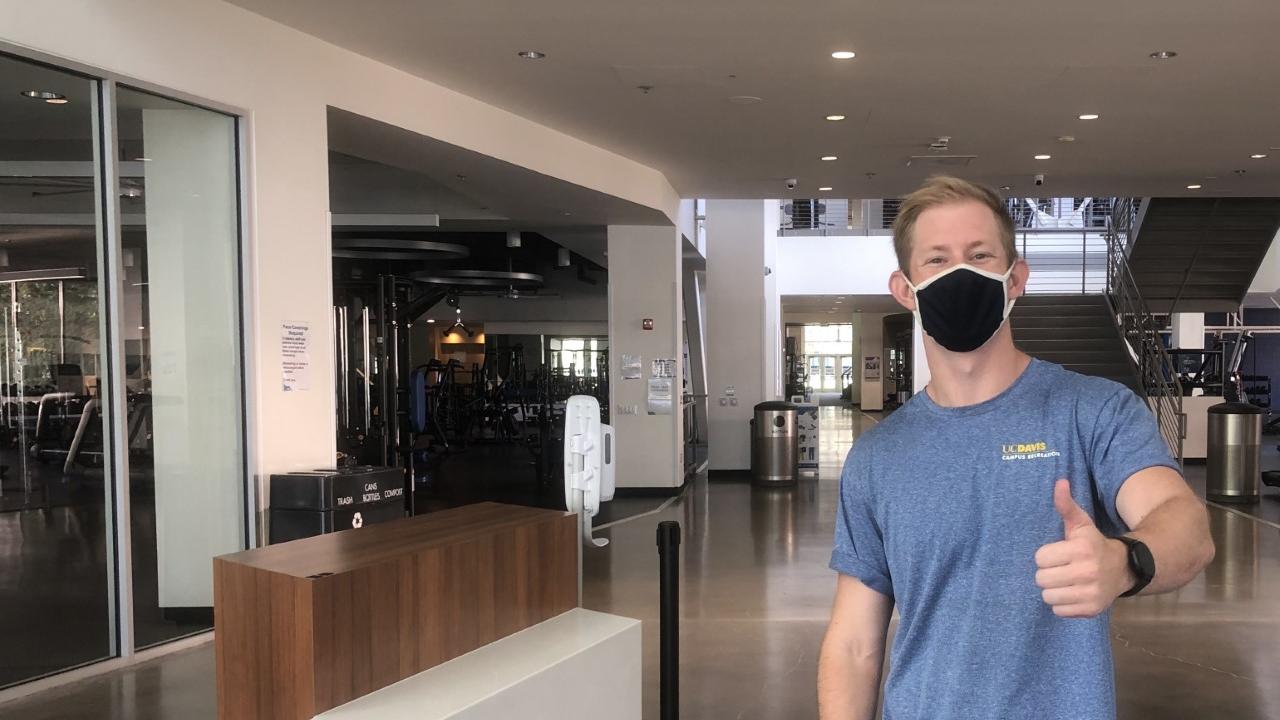
Tips on Returning to the Gym
By: Esther Garcia, Healthy Aggies Intern
At the start of the pandemic, many people began to worry when they found out that gyms were closing. Dumbbells, resistance bands, stationary bikes and treadmills were out of stock or overpriced on almost every equipment website. But now, as many counties began to move up COVID case tiers, gyms are beginning to reopen with regulations. (A little reminder, the UC Davis ARC will open November 1.) Many people are aching to get back into the gym but before we get back, here are a few things to keep in mind.
1. Start slow. Be patient.
If you are returning to the gym after six months of not being active, keep in mind that the endurance, strength, and conditioning you had before will not be the same. You are going to have to “restart”. If you performed weightlifting at the gym, then you may need to start by lifting less weight than before quarantine. For example, if you were able to shoulder press with 35lbs dumbbells for 3 sets of 8 repetitions before the gyms shut down, then you may need to start at 20lbs-25lbs for the same amount of sets and repetitions, transitioning back into the workout. Ease back in to avoid overuse or injury; diminish the intensity and work your way back up. As you do so, focus on form and breathing technique, don’t get caught up on the weight or speed.
If you were active while sheltering at home, you may have used alternative weights like water bottles, books, or even family members and tried new forms of exercises like yoga, circuit training, or cardio. If this is the case, then going back to the gym will probably not be as difficult, but you still need to remain cautious on the intensity of workout, back at the gym, in order to prevent injuries.
Moreover, spending hours at the gym every day to recover lost time is not productive. Rest time is as important as workout time. If you were accustomed to going to the gym four times a week, then start by attending three times a week. Our body needs time in order to perform better at the next gym session. Finally, do not expect to see results right away; return to the gym knowing that building strength and endurance takes time.
2. Nutrition is key.
As much as being active is important, nutrition is a major component to our overall health and performance at the gym. If you are not sure what to eat before or after your workout, review How To Fuel For Your Exercise & What To Eat To Recover. Remember it is never too late to focus on nutrition for an overall healthier lifestyle. We not only have to be cautious about what we eat before and after our workout, but also at the times or days when we aren’t working out. Overall, a balanced diet will get you all the nutrients necessary not only for short-term benefits but for life-long health.
3. COVID-19 has not ended.
Unfortunately, we are still in a pandemic. Please follow regulations, especially the ones in place at your gym. Wipe all the machines and equipment before and after you use them. If there is a day that you feel ill, then don’t go to the gym. It is better to stay home and remain cautious. Remember to wear your mask, remain six feet apart, and wash your hands.
